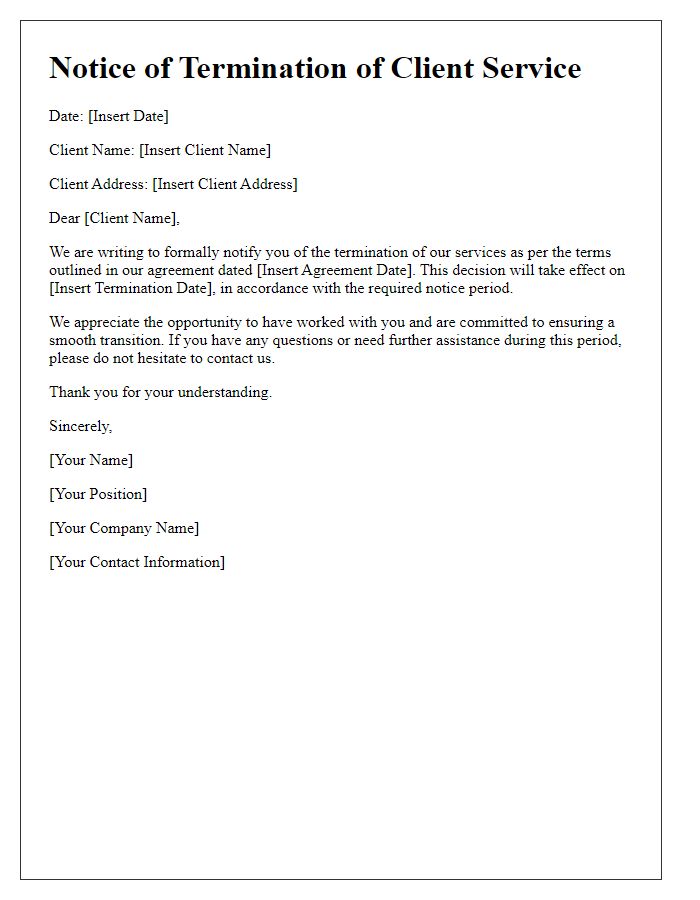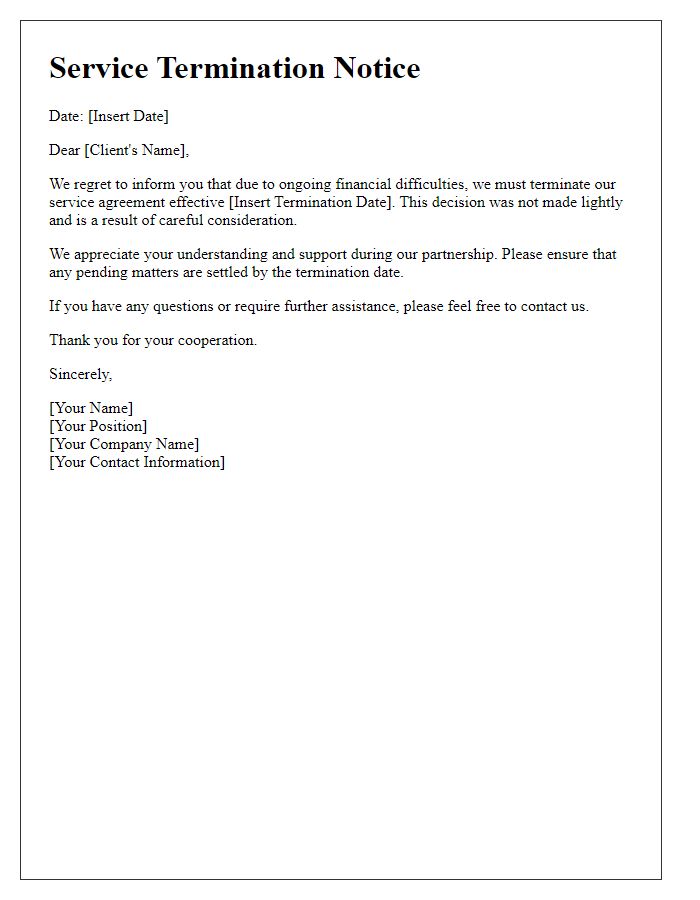When it comes to terminating a client service agreement, clear communication is key. It's important to approach the situation with professionalism and empathy, ensuring that the client understands the reasons behind the decision. A well-crafted letter can help maintain goodwill and provide a smooth transition. If you're looking for a sample template to guide you through this process, keep reading!

Clear Identification of Parties
Termination of a client service agreement requires precise identification of the parties involved to ensure clarity and legal validity. The parties include the service provider, typically a company or individual, and the client, who may also be a business or individual. Essential details include the complete legal names of both parties, their respective addresses (often the registered business address for companies), and any identification numbers pertinent to the entities, such as a tax identification number or company registration number. This identification establishes a clear contractual relationship, ensuring that both parties understand their roles and responsibilities as outlined in the original agreement. Proper identification helps to avoid misunderstandings during the termination process and provides a clear record for future reference.
Effective Termination Date
A client service agreement outlines responsibilities, terms, and conditions between parties. A termination notice marks the end of this contract. The effective termination date signifies when obligations cease. Clear communication is crucial in this process to avoid confusion. Legal implications may arise if termination is not handled properly. It is essential to deliver the notice in accordance with the specified terms within the agreement, often detailing methods of delivery such as email or certified mail. The notice should include a reference to any outstanding obligations or the final settlement process to ensure clarity for both parties involved.
Reason for Termination
Termination of client service agreements can arise from various reasons, including poor performance, breach of contract, or changes in business direction. A client, for instance, may decide to terminate services due to unsatisfactory project outcomes or missed deadlines, which can significantly impact business operations. Finding a new provider can mitigate risks associated with the initial partner's lack of fulfillment. Additionally, a financial review indicating budget constraints may lead a company to reallocate resources, necessitating the termination of existing contracts. Ensuring clear communication of the reasons for termination can help maintain professionalism and potentially preserve a future working relationship.
Obligations Post-Termination
Post-termination obligations play a critical role in the dissolution of client service agreements in various industries. Following the end of an agreement, clients (typically the entities receiving service) and service providers (the entities delivering the service) must adhere to specific responsibilities, which may include the return of proprietary materials, intellectual property provisions, and payment settlements for services rendered up until the termination date. For example, the obligation to return confidential information may be required within a 30-day timeframe from termination to ensure that sensitive business strategies remain secure. Additionally, any outstanding invoices from software development companies, consulting firms, or legal service providers must be settled promptly as outlined in the original contract to avoid legal disputes and maintain goodwill. Furthermore, both parties must also follow guidelines related to post-termination non-solicitation clauses, which prevent either party from poaching employees or clients for a specified duration, usually ranging from six months to two years, to prevent market disruption. Such obligations ensure that both entities navigate the termination process smoothly and professionally.
Contact Information for Further Communication
Termination of a client service agreement can impact both parties involved. Clear communication regarding the termination process is crucial. Ensure to provide the necessary contact information to facilitate further discussion. Include names, titles, email addresses, and phone numbers for key personnel (for both the service provider and client) who can address queries. Specify a primary contact person who will handle the transition, ensuring that all questions regarding final deliverables, outstanding invoices, or the return of materials are addressed promptly. Highlight the importance of keeping lines of communication open to prevent misunderstandings during this critical phase.
Letter Template For Termination Of Client Service Agreement Samples
Letter template of ending service relationship due to changed circumstances.

Letter template of voluntary termination of service agreement by client.

Letter template of service agreement cancellation for strategic realignment.











Comments